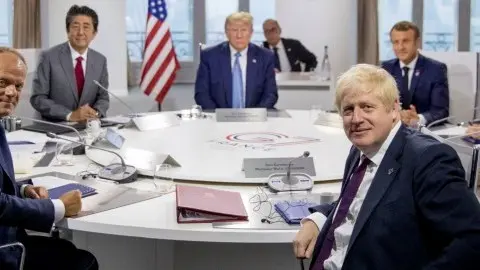FX: Going with the cyclical flow
The cyclical slowdown continues to drive global FX trends. Unless we see some material improvement in trade relations, expect pro-cyclical currencies, including the euro, staying under pressure. Barring a much more aggressive Fed easing cycle, we fear EUR/USD could drop into a new 1.05-1.10 trading range into year-end.
FX dragged by global growth worries...
FX markets are very much trading in line with the global fears of secular stagnation. Those currencies most exposed to the global trade and manufacturing cycle are under-performing, while the counter-cyclical JPY and CHF continue to do well. Unless we witness a sea-change in trade relations or policy makers undertake sizeable stimulus, it looks like these trends will extend into year-end. This could mean EUR/USD starts to trade a 1.05-1.10 rather than 1.10-1.15 range.
When looking more broadly, the trade-weighted dollar is pressing the 2002 highs. So far President Trump has said that he can ‘work with’ the strong dollar, although he does remain sensitive to big figure breaks in key trading partners’ currencies – e.g. USD/CNY trading through 7.00 and EUR/USD trading sub 1.10. However, his mechanism to reverse dollar strength still seems to be pressuring the Fed rather than FX intervention.
... and current trends are unlikely to reverse
Current trends look unlikely to reverse until we see a change in: a) trade relations or b) massive enough stimulus to steepen yield curves and weaken the dollar. On the former, we tentatively expect US-China trade relations to improve in 1Q/2Q 2020 (the low-point in the US activity cycle) and look for a rebound in pro-cyclical currencies early next year.
Alternatively, a turn in the dollar could come if the Fed were to act aggressively. That seems a tall order given that the market already prices 125bp of easing by end 2020. Of course, if the Fed were to cut 50bp on 18th September, suggesting a front-loaded easing cycle, that could put a stronger lid on the dollar. That seems unlikely at this stage. Instead it seems USD hedging costs (now 2.7% p.a for Europeans) will remain high for some time. In fact, we think US policy rates need to drop 50-75bp before rate spreads start to have a meaningful impact on the dollar.
The euro continues to sink
Heavily exposed to the global trade cycle, the EUR continues to sink. EUR/USD also faces the added threat of Washington turning its attention to EU auto imports in November – perhaps at a time when Brexit weakens Europe. At the same time, the ECB will be re-starting asset purchases, locking European interest rates to their new floors.
Can under-valuation save the euro? Our medium-term models, designed to assess fair value over a 2-3 year horizon, actually suggest EUR/USD is fairly valued near 1.10. Given that EUR/USD can easily trade +/-15% around fair value, the ground beneath EUR/USD looks soft. That’s why we think EUR/USD may be breaking into a 1.05-1.10 range.
Sticking to our guns on sterling
Brexit continues to confound most scenario analysis although we are still happy with our 3Q19 calls of 0.95 for EUR/GBP and 1.18 for Cable. What happens thereafter is any-one’s guess, though we are more minded towards 1.00 and 1.10 for EUR/GBP and GBP/USD as ‘no-deal’ Brexit probabilities rise and the alternatives – a minority opposition government with attendant fiscal or Scottish independence risks – doesn’t look too attractive either.
Download
Download article
6 September 2019
September Economic Update: Getting real on ‘‘no-deal’’ This bundle contains 9 ArticlesThis publication has been prepared by ING solely for information purposes irrespective of a particular user's means, financial situation or investment objectives. The information does not constitute investment recommendation, and nor is it investment, legal or tax advice or an offer or solicitation to purchase or sell any financial instrument. Read more
